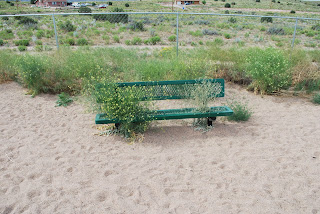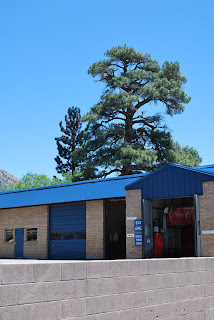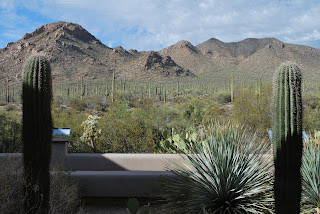
15. The south rim & the Grand Canyon National P.



A sidewalk followed the canyon along with paved and fenced vistas jutting out. Parking lots and a jammed road carried alongside the sidewalk. Most puddled at the nearest vista, others puttered along in the hot puffing traffic from one point to another. The view was unreal, painted on, too much to take, endless. With all the struggling people, cameras, and cheer, it felt another roadside attraction.

We'd planned a hike into the canyon for the night, only we had no permits. We stopped at the ranger station. "Permits for tonight were purchased 7 months ago." Beaten and distgusted we re-iterated 64 down to 40 and then took the old route 66 from Seligman to the Hualapai Native American reservation.

(Hagel and I built 6 playgrounds for the Hualapai in 2005. We spent a month at the Grand Canyon Carverns Inn while we worked. A 2000lb. ground sloth had fallen into the caverns and starved out over 11000 year ago. We saw the frantic claw prints scrapped into the limestone.

We also hiked down to the Havasupai reservation in the bottom of the canyon where 500 foot waterfalls fall into blue pools, the hiking trails tunnel right into the canyon rock, the mail is packed in on mules, and the porta toliets are dropped in by copter)
We stopped at the G.C. Cavens for gas:

checked out a chain-linked-caged fiberglass buffalo in a residential front yard:


then revisited the graffiti & weed ridden playstructures of 2005:



we took the 2 lane highway throught the Hualapai Res. to the Havasu Canyon Hilltop parklot at the canyon. As I vaguely understand it, the national park land of autos was once the land of the Havasupai. The tribe was relocated here along Havasu creek, their ancestral petroglyps remain below the vistas and sunglasses.


the sun went and we truck slept on the rim.
State Stats:
Arizona is the 6th largest state and the 20th most populous (just over 5 million). The residents are called Arizonans. The highest point is 12,633'. Its called the Grand Canyon State. The bird is the cactus wren, the flower--the Saguaro cactus blossom, the tree--Palo verde. AZ became united in 1912, the last of the contiguous states to do so (number 48).



















































